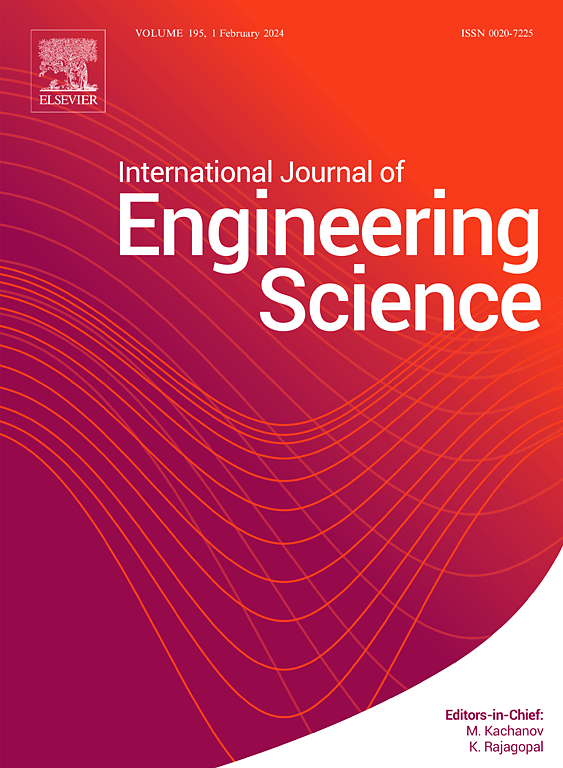漂通量两相流模型中的波动动力学
IF 5.7
1区 工程技术
Q1 ENGINEERING, MULTIDISCIPLINARY
International Journal of Engineering Science
Pub Date : 2025-09-22
DOI:10.1016/j.ijengsci.2025.104385
引用次数: 0
摘要
本文对一个简化的两相流模型的对数状态方程进行了全面的对称性分析。在单参数李群变换下,我们生成了模型的局部对称性,保持了系统的不变性。然后,我们对一维最优子代数进行分类,这是一个有效计算不变解的系统框架。利用特征方法,利用最优子代数,给出了模型的显式解。进一步证明了所考虑的模型存在非局部对称性,并给出了局部对称性不能提供的精确解。进一步,通过构造守恒律证明了模型的非线性自伴随性质的存在性。本研究通过研究复杂的双曲性质,如c1波,特征激波,以及它们与非局部对称解之一的相互作用来结束,突出了模型的临界波动动力学。本文章由计算机程序翻译,如有差异,请以英文原文为准。
Wave dynamics in the drift-flux two-phase flow model
The present study provides a comprehensive symmetry analysis for a simplified two-phase flow model with the logarithmic equation of state. Under a one-parameter Lie group of transformations, we generate the local symmetry of the model, preserving the invariance of the system. Subsequently, we classify one-dimensional optimal subalgebras, which is a systematic framework for computing invariant solutions efficiently. With the characteristic method, we developed explicit solutions for the model utilizing the optimal subalgebras. Further, we prove that nonlocal symmetries exist for the considered model, and then some new exact solutions were developed where local symmetries cannot provide. Furthermore, the existence of the nonlinear self-adjointness property of the model is demonstrated with the construction of conservation laws. This study concludes by examining the complex hyperbolic nature, such as -wave, characteristic shock, and their interaction with one of the solutions derived from nonlocal symmetry, highlighting the critical wave dynamics of the model.
求助全文
通过发布文献求助,成功后即可免费获取论文全文。
去求助
来源期刊

International Journal of Engineering Science
工程技术-工程:综合
CiteScore
11.80
自引率
16.70%
发文量
86
审稿时长
45 days
期刊介绍:
The International Journal of Engineering Science is not limited to a specific aspect of science and engineering but is instead devoted to a wide range of subfields in the engineering sciences. While it encourages a broad spectrum of contribution in the engineering sciences, its core interest lies in issues concerning material modeling and response. Articles of interdisciplinary nature are particularly welcome.
The primary goal of the new editors is to maintain high quality of publications. There will be a commitment to expediting the time taken for the publication of the papers. The articles that are sent for reviews will have names of the authors deleted with a view towards enhancing the objectivity and fairness of the review process.
Articles that are devoted to the purely mathematical aspects without a discussion of the physical implications of the results or the consideration of specific examples are discouraged. Articles concerning material science should not be limited merely to a description and recording of observations but should contain theoretical or quantitative discussion of the results.
 求助内容:
求助内容: 应助结果提醒方式:
应助结果提醒方式:


